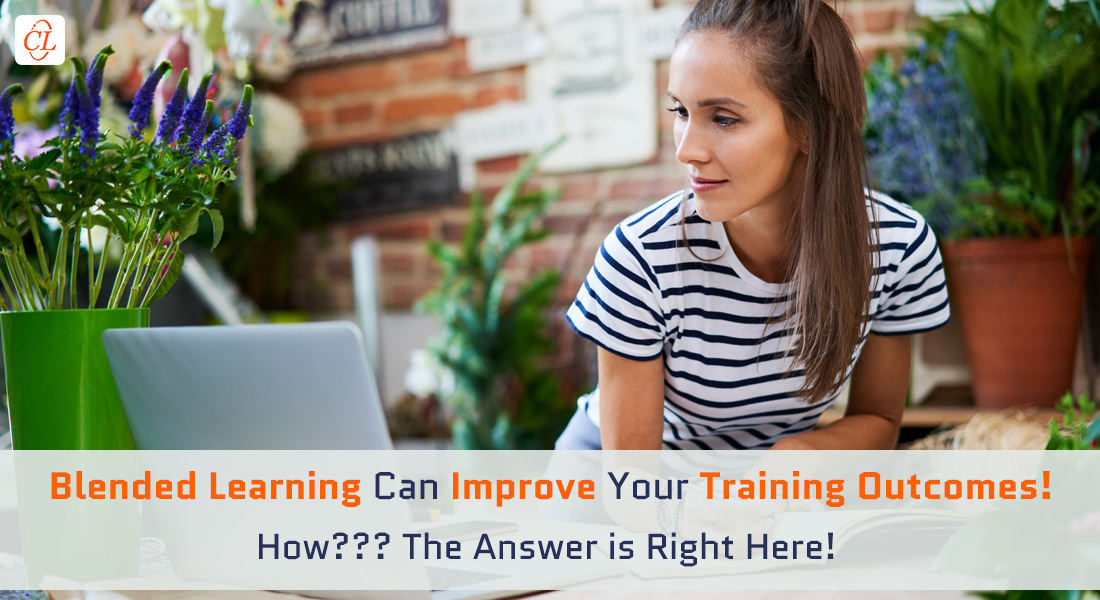The Secret to Getting the Best Out of Blended Learning for Employee Training

Blended Learning – An Incredible Way to Learn! Let’s admit it. Selecting the right format to deliver your training can be a daunting task. And having to choose between traditional training in brick-and-mortar classrooms and flexible online formats can be even more difficult. But don’t worry, this blog will help you leverage blended learning using both modes of learning for incredible outcomes.
What Exactly is Blended Learning?
Blended learning is a strategy where both face-to-face classroom training and online learning are used to address different phases of learning to maximize learning.
Blended learning = Instructor-led Training (ILT) + Online Learning (synchronous and asynchronous) + Performance Support
Here’s how we can use blended learning to accelerate time to proficiency.
So, what are all the formats that can be used in blended learning?
Formats of Learning
- Live formats
- Virtual Collaboration
- Synchronous
- Asynchronous
- Self-paced learning
- Performance support systems
Live Formats – These require learners and instructors to be together at one place at the same time. Examples include classroom ILT and On-the-Job Training (OJT).
Synchronous Virtual Collaboration – The instructor and learners participate and collaborate from different locations, at the same time. Examples include virtual instructor-led training (VILT) and videoconferencing.
Asynchronous Virtual Collaboration – This is done through virtual media with learners learning in their own time. Examples include email, bulletin boards, online communities.
Self-paced Learning – Self-paced learning allows learners to learn at their time and pace. Examples includes eLearning and its avatars and online resources.
Performance Support Systems (EPSS) – Performance support provides learning resources at learners’ moments of need. These can be job-aids, knowledge databases, or other performance support tools.
That was about the various formats of learning. Now, let’s go into blended learning in more detail.
5 Benefits of Blended Learning for Corporate Training
Blended learning:- Bridges learning gaps
- Reduces training time and costs
- Enables self-paced learning
- Caters to different learning styles
Why Blended Learning?
Traditional classroom training has long been the firm favorite of organizations. But online learning has taken center stage of late. Today’s generation of learners want training that offers the personal touch of the classroom and the flexibility of self-paced learning. And blended learning offers the perfect solution by enabling the interaction of a live classroom while giving them the freedom of anywhere anytime online learning. Blended learning, with its multiple formats, also helps in continuous learning.
Benefits of Blended Learning
1. Bridges gaps in learning
Blended learning offers the best of both training formats i.e., offline, and online. It helps learners apply the knowledge at their workplace by providing efficient performance support. It also helps battle the ‘Forgetting Curve’ by reinforcing learning through microlearning.
2. Reduces training time and costs
Blended learning can be designed in such a way that complex topics are dealt with in the classroom, and others through the online format. Online training saves on costs associated with classroom training, with its reusability an additional plus.
With learners being able to access training at their desks and while on the move (through their phones), a lot of the training time and costs are reduced.
3. Enables self-paced learning
Blended learning offers learners the flexibility of learning in their convenient time and pace. Bite-sized microlearning modules can be used to reinforce learning and provide just-in-time learning. Online resources can be provided for supplementary material.
With easy access to learning ANYTIME and ANYWHERE on mobile phones, laptops, and desktops, blended learning lets learners be in control of their learning. This also makes it easy to upskill employees.
4. Caters to different learning styles
Combining multiple formats and different activities is the biggest advantage of blended learning. This makes it ideal to train different learners with different learning styles. A blended learning program with combination of various visual, auditory, and kinesthetic elements engages learners with different learning styles and ensures better training outcomes.
Now that we are aware of the incredible benefits of blended learning, let us have a quick look at blended learning models.
Blended Learning Models
The 4 primary models of blended learning according to the Christensen Institute are:
1. Rotational Model
This model provides a lot of flexibility in blending classroom, online, social learning, and has a fixed schedule. The preferred way to use the Rotational Model is through the ‘Flipped Classroom’. In this, the learners go through online training first and then attend the classroom for more hands-on training.
2. Flex Model
This learning model is most suitable when learners are scattered across various geographical locations. eLearning is a major component of this model and other formats are used to complement online training.
3. Enriched Virtual Model
Along with classroom training (physical or VILT), self-paced learning is an important component of this model. This blend is ideal when there are very few trainers available.
4. A La Carte Model
This model of blended learning mainly focuses on classroom training supplemented by online training before and after the classroom training. This blend provides online performance support to reinforce training.
Parting Thoughts
Training employees was never this easy or effective. Blended learning offers the best of both worlds, with various formats to choose from. Your blended learning strategy must align with your organization’s goals to make it a success. Want to explore blended learning? Check this eBook.





![Blended Learning for Corporate Training: Overcome 3 Implementation Challenges [Infographic]](https://blog.commlabindia.com/hubfs/Imported_Blog_Media/blended-learning-implementation-challenges-solutions-info-v1.jpg)